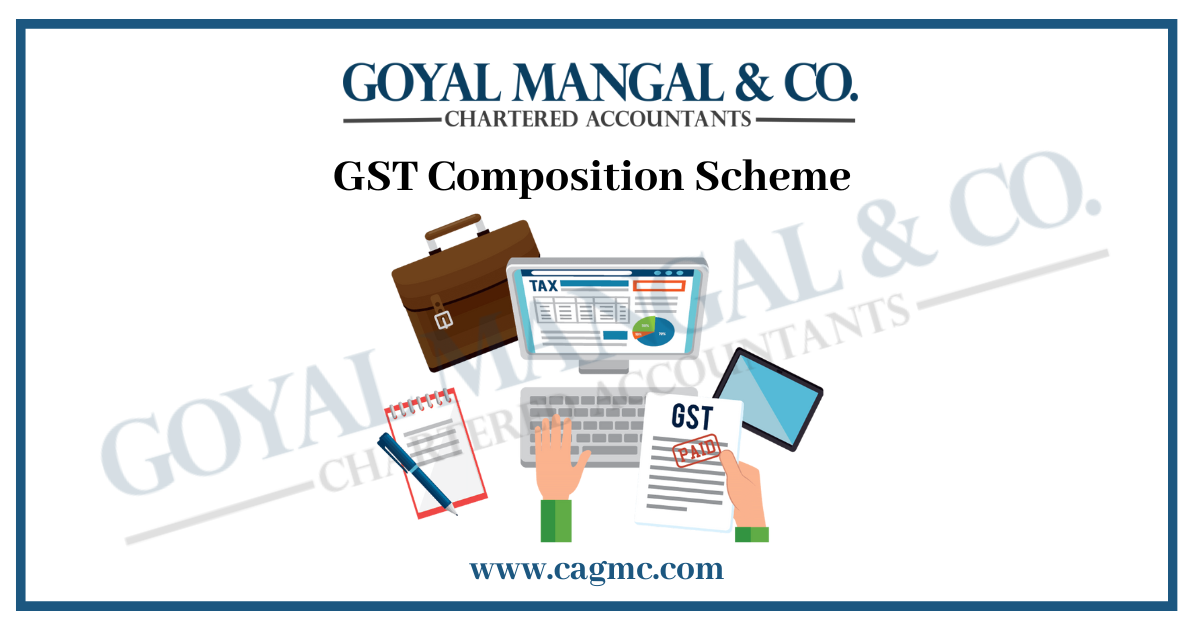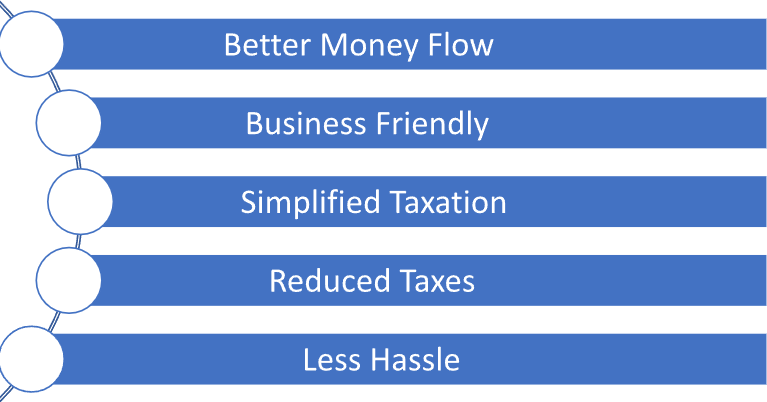
Knowing the tax environment and complying with tax compliances may cause difficulties for small enterprises, leading the Government to implement the Composition Scheme inside the framework of the Goods and Services Tax (GST) system. This alternative scheme has been developed to simplify GST compliance and reduce related expenses. It proves to be a viable solution for small-scale taxpayers whose turnover falls within a specified limit. This article offers a thorough explanation of the Composition Scheme.
Table of Contents
Meaning of Composition Scheme
The composition scheme can be seen as a streamlined method for small enterprises to fulfill their tax obligations. Instead of engaging in the complex procedure of managing a wealth of complex tax documents, individuals have the option to remit a predetermined tax sum that is dependent upon their total income. The GST composition scheme has a turnover limit.
This facilitates their compliance with tax regulations and enables them to concentrate on their business operations, reducing the burden of complex tax computations. The primary objective of this solution is to streamline and optimize tax-related processes for small enterprises, enhancing efficiency and reducing resource expenditure.
Who may utilize the Composition Scheme?
Taxpayers with an annual turnover below Rs 1.5 crore have the option to choose the Composition Scheme. The current threshold for North-Eastern states and Himachal Pradesh has been revised to Rs 75 lakh. According to the CGST (Amendment) Act of 2018, a composition dealer is permitted to provide services up to a maximum of ten percent of their sales, or Rs.5 lakhs, whichever amount is greater. The effective date of this change commenced on February 1st, 2019. Determine turnover, it is important to evaluate the turnover of all businesses that are registered under the same Permanent Account Number (PAN).
Who is ineligible for the Composition Scheme?
The following individuals are ineligible to participate in the scheme:
- Manufacturer of ice cream, pan masala, or tobacco
- An individual engaged in interstate supply
- A non-resident taxable individual or an occasional taxpayer
Benefits of the Composition Scheme
Composition Scheme Benefits:
- Simplified Taxation: Small firms find tax-related procedures easier thanks to the composition scheme. They don’t have to cope with a ton of complicated tax paperwork and papers.
- Reduced Taxes: If you participate in this plan, taxes are calculated as a fixed percentage of your sales. This typically translates into lower tax payments than you would pay otherwise.
- Less Hassle: There are fewer paperwork and regulations to worry about. It’s easier.
- Better Money Flow: You can better manage your finances because your taxes are based on how much you sell. It aids with budgeting.
- Business-Friendly: This is advantageous for those looking to launch small enterprises. This promotes entrepreneurship and stimulates the economy.
Drawback of Composition Scheme
The composition scheme’s drawbacks:
- Small Business Only: This is only available to small enterprises with modest revenue streams. Larger businesses can’t apply for this scheme
- Absence of Tax Credit: Your company’s purchases do not qualify for a refund of the taxes you have already paid on those purchases. That may lead to increased expenses.
- Stuck in One Spot: Typically, you are limited to operating in one location as interstate supply is not allowed.
- Difficult Competition: It could be challenging to outbid large corporations. They receive tax breaks that you do not, so they may charge less.
- Fixed Tax: Depending on how well your company is performing, the fixed tax rate may not always line up. You may pay more taxes than necessary
- Ineligibility: Business entities operating within the composition system are restricted from engaging in the provision of non-taxable commodities, such as alcohol and goods, using electronic commerce platforms. This constraint has the potential to limit the variety of products that these businesses can present to consumers.
For small enterprises, the composition method is a tax shortcut. Although its guidelines might not be suitable for everyone, it is simpler. Consider what’s best for your business before employing it.
What are the eligibility requirements for the Composition Scheme?
To avail of the composition scheme, several conditions must be met.
- A dealer who chooses to participate in the composition scheme is not eligible to claim any Input Tax Credit.
- The dealer is unable to provide products that are exempt from products and Services Tax (GST), such as alcohol.
- Under the Reverse Charge Mechanism, taxpayers are obligated to remit taxes at the standard rates for transactions.
- If a taxable individual possesses many business segments, such as those about textiles, electronic accessories, groceries, and the like, all these businesses must be registered collectively under the same PAN (Permanent Account Number). Alternatively, the individual may choose to opt out of the system altogether.
- The obligation is imposed upon the taxpayer to display the term ‘composition taxable person’ on all notices or signboards at their company premises
- The taxpayer must include the term ‘composition taxable person’ on each bill of supply that they issue.
According to the CGST (Amendment) Act of 2018, it is now permissible for a manufacturer or trader to provide services up to a maximum of ten percent of their sales or Rs. 5 lakhs, whichever amount is greater.
What is the process by which a taxpayer might choose to participate in the composition scheme?
To avail of the composition scheme, a taxpayer is required to submit the GST CMP-02 form to the appropriate government authority. The process can be completed by online access to the GST Portal. It is recommended that dealers who wish to opt for the Composition Scheme provide this notification at the commencement of each Financial Year.
What is the recommended procedure for a Composition Dealer to issue an invoice?
A dealer operating under the composition scheme is not authorized to produce a tax invoice. The reason for this is that a composition dealer is not authorized to levy taxes on the customers they serve. Individuals are required to bear the financial burden of taxation. Therefore, the dealer must provide a Bill of Supply. It is recommended that the dealer includes the phrase “composition taxable person, not eligible to collect tax on supplies” prominently at the very start of the Bill of Supply.
GST Rates under the composition scheme
People and businesses that sign up for the composition plan will have to pay GST at different rates based on the type of business they run. GST composition scheme rates here are between 1% and 6%. Under the composition plan, the GST rates keep the amounts of CGST and SGST/UGST evenly spread out. For example, 1% GST includes 0.5% CGST and 0.5% SGST/UGST, and 6% GST includes 3% SGST/UGST and 3% CGST.
The GST rates for the composition scheme fall into the following categories:
- For traders and other qualified suppliers registered under the composition system, 1% of the turnover.
- 2% of manufacturers’ revenue, except those who deal in goods not included by the GST composition plan.
- Composition scheme under GST for services for restaurant services, 5% of the turnover is allocated
- 6% of sales for companies providing mixed or offering services; this does not include restaurant services.
How is a composition dealer supposed to pay GST?
The payment of GST needs to be made from the supplies from out of pocket. The payment of GST that needs to be done by the composition dealer consists of the following:
- GST on goods that are sold.
- Tax on Reverse charge
- Tax on purchases made from dealers who aren’t registered.
Composition Levy Intimation
- Individuals who were registered under the pre-GST administration (now irrelevant due to its transitional nature): Individuals who are granted provisional registration under the VAT Act, Service Tax laws, Central Excise laws, or similar legislation and choose to opt for Composition Levy must submit an electronic notification in the form of GST Composition Levy Form CMP-01, duly signed, no later than 30 days from the appointed date (i.e., 1/7/2017), which is the date from which GST commenced.
- Certain individuals are registered under the normal GST scheme and want to get registered under the composition scheme as their turnover is below a prescribed limit. So, an individual must follow below below-mentioned GST composition scheme rules to get registered as a composition taxpayer.
- Submit a FORM GST CMP-02 within 30 days from the start of the financial year
- Submit a statement on FORM GST ITC-3, detailing input-related input-tax credit (ITC) information for stock inputs, inputs contained in semi-finished or finished products, within 60 days of the start of the applicable fiscal year.
- Applicants for a new register under the GST who wish to utilize the scheme: Individuals who wish to register as composition taxpayers from the outset are required to select the scheme in Part-B of FORM GST REG-01.This selection shall be considered as an intimation for opting under the scheme; therefore, no further intimation is necessary once registration is approved.
Returns of Composition Scheme
The present discourse concerns the obligations of composition dealers in the context of returns. Composition dealers benefit from a simplified GST return filing process that encompasses the submission of the following returns:
- The CMP-08 (Quarterly Statement) encompasses the tax payment that is required to be made by the 18th day of the month after the conclusion of the quarter.
- The GSTR-4, which pertains to the annual return, necessitates that composition dealers submit this return every year. The deadline for filing the GSTR-4 is April 30 of the subsequent financial year, commencing from the fiscal year 2019-20 onwards.
- The filing deadline for the GSTR-9A, an annual return, is December 31 of the following fiscal year.
It is worth noting that composition dealers are not required to maintain extensive documents, which simplifies their record-keeping responsibilities within the framework of the Goods and Services Tax (GST) program.
Takeaway
Small suppliers and local suppliers operating inside a state benefit from the composition levy system since it spares them from numerous procedural compliance requirements and provides a hassle-free working environment. The GST Composition Levy mechanism was implemented to protect small business interests. As a result, it is advised that small taxpayers who qualify for this scheme have a thorough understanding of it to benefit from it.



